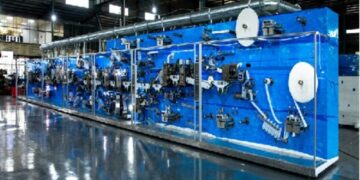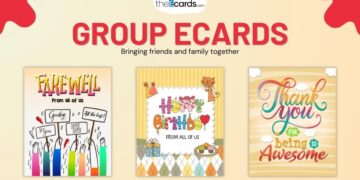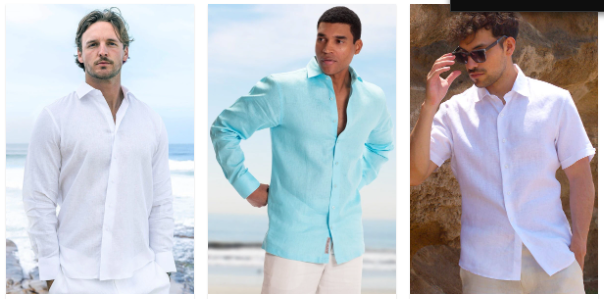In a world increasingly focused on environmental consciousness, the appeal of vintage fashion has experienced a renaissance. Vintage fashion embodies sustainability in its truest form. From reducing environmental impact to promoting individuality, the resurgence of vintage clothing shows the power of conscious consumption. In this blog post, we delve into the multifaceted aspects of sustainability and the numerous benefits of shopping vintage with an example of vintage sheepskin coats.
Defining Vintage Fashion and Sustainability
Vintage fashion refers to clothing, accessories, and styles that are at least 20 years old. It’s a celebration of the past, allowing us to connect with different eras and styles while contributing to a more sustainable way of dressing. Sustainability encompasses practices that reduce negative environmental impacts and foster a more ethical approach to consumption. Vintage fashion fits seamlessly into this ethos by promoting the reuse and repurposing of existing garments, thereby reducing the demand for new clothing production.
Environmental Benefits of Vintage Fashion
Reduced Clothing Waste: The fast fashion industry is notorious for its excessive clothing waste. Vintage fashion disrupts this cycle by giving garments a new lease on life. By purchasing vintage pieces, we actively participate in diverting textiles from landfills and decreasing the overall amount of waste generated.
Lower Carbon Footprint: The production of new clothing items often involves resource-intensive processes that contribute to carbon emissions. Vintage fashion circumvents this by eliminating the need for new production, thereby reducing the carbon footprint associated with manufacturing, transportation, and packaging.
Conservation of Resources: Vintage fashion champions the idea of making the most of existing resources. By choosing vintage over new, we help conserve the water, energy, and raw materials that would have been consumed in the creation of new garments.
Preservation of Heritage: Vintage fashion serves as a testament to the artistry and craftsmanship of the past. Embracing vintage styles nurtures an appreciation for the rich history of fashion and encourages the preservation of traditional techniques and designs.
Economic and Social Benefits of Vintage Fashion
Individuality and Self-Expression: Vintage clothing offers a unique way to express one’s individuality. In a world where mass-produced fashion dominates, vintage pieces allow us to curate a personal style that stands out from the crowd.
Quality and Durability: Vintage clothing often reflects a higher level of quality and craftsmanship compared to many contemporary fast fashion items. These pieces were built to last, and their durability can help combat the disposable nature of modern clothing.
Affordability: While luxury vintage pieces can be expensive, there is a vast range of affordable options available in thrift stores, vintage shops, and online platforms. This accessibility makes vintage fashion a budget-friendly way to dress stylishly and sustainably.
Supporting Local Businesses: Many vintage shops are small, locally owned businesses. Choosing to shop vintage supports these enterprises and contributes to the growth of local economies.
Promoting Sustainable Consumer Behavior
Mindful Consumption: Vintage fashion encourages us to think critically about our consumption habits. By embracing the concept of “buying less, but better,” we cultivate a more mindful approach to shopping that extends beyond clothing.
Minimalism: The vintage ethos aligns with minimalist principles, emphasizing the value of a curated wardrobe filled with timeless pieces. This reduces clutter, promotes efficient use of space, and streamlines daily decision-making.
Reducing Fast Fashion Demand: The more individuals turn to vintage fashion, the less demand there is for fast fashion products. This shift sends a powerful message to the fashion industry, urging it to adopt more sustainable practices.
Challenges and Considerations
While vintage fashion offers numerous benefits, it’s essential to consider a few challenges as well:
Sizing and Fit: Vintage sizing can be different from modern sizing, posing challenges when shopping online or in-store. Alterations might be necessary to achieve the desired fit.
Condition and Care: Vintage pieces might require extra care due to their age. Proper cleaning and storage are essential to maintain the integrity of these garments.
Ethical Sourcing: Some vintage items might have origins linked to practices that are no longer considered ethical, such as fur or certain types of exotic leather. It’s important to be aware of the ethical implications of specific vintage pieces.
The Benefits of Choosing Vintage Over New: An Example of Shearling Jackets
To illustrate the advantages of choosing vintage over new, let’s use the example of vintage sheepskin coats. Firstly, these garments have been around for several decades and remain perfectly wearable, which is a testament to the superb craftsmanship and materials used. Secondly, more often than not vintage sheepskin coats come in unique designs with different embellishments, high quality details etc. Nowadays when cost of production and profit margins are the main focus for clothing companies, new garments may lack great design and quality as a result of cost-cutting measures. Thirdly, To purchase a coat of the same quality and design made today, it would cost up to even four times as much as buying the equivalent vintage coat
The resurgence of vintage fashion aligns perfectly with the growing need for sustainable practices in the fashion industry. By embracing vintage clothing, we contribute to the reduction of waste, carbon emissions, and resource consumption. Furthermore, vintage fashion allows us to express our individuality, support local businesses, and engage in mindful consumer behavior. While challenges certainly exist, the benefits of vintage fashion far outweigh them. As we navigate the path toward a more sustainable future, incorporating vintage pieces into our wardrobes can make a significant difference—one stylish step at a time.























































